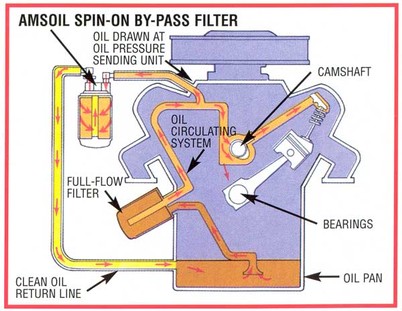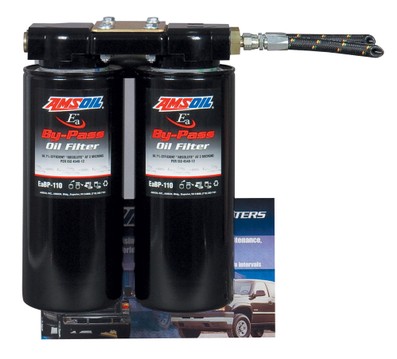AMSOIL Oil Filtration Products - Select Synthetics - AMSOIL Authorized Dealer



Main menu:
- Home Page
-
Products
-
AMSOIL Products
- Shop by Product
- Shop by Equipment
- Shop by Category
-
Product Lookup Guides
- Product Lookup Guides - Home
- Auto & Light Truck Lookup Guide
- Motorcycle & Dirt Bike Lookup Guide
- Harley-Davidson Products Guide
- All-Terrain Vehicle Lookup Guide
- Utility Terrain Vehicle Lookup Guide
- Snowmobile Lookup Guide
- Marine Outboard Lookup Guide
- Personal Watercraft Lookup Guide
- Small Engine Lookup Guide
- Filter Lookup Guides
- Oil Analysis Services
- AMSOIL - The Blog
- AMSOIL YouTube Videos
- AMSOIL Testimonials
- The AMSOIL Newsstand
- AMSOIL Performance Tests
- AMSOIL Guarantee
- Safety Data Sheets
- Free Product Catalog
- Shipping & Product Return
- ALTRUM Products
-
AMSOIL Products
- About AMSOIL
-
Oil Basics
- What Is Motor Oil?
- What Is Oil Viscosity?
- What Does Motor Oil Do?
- Why Does Oil Need To Be Changed?
- How Often Should I Change My Oil?
- When Should I Do My 1st Oil Change?
- Can I Mix Different Oils?
- Lubrication Regimes
- Newtonian vs. Non-Newtonian
- Base Oil Groups
- Motor Oil Specifications
- Service Classifications & Grades
- Oil Evaluation Tests
- What is Oil Analysis?
- Why Synthetics?
- Oil Filtration
- Buy Wholesale
- FAQs
- Contact Us
Products > AMSOIL Products > Shop by Category
Oil Filtration
Filtration – Your First Defence against Wear
Automotive experts agree dirt is the number one cause of engine wear. In fact, analysis by Federal-Mogul Corporation reports that 43.4 percent of all engine bearing distress is caused by dirt.
Dirt particles are extremely abrasive. They consist of razor-like flakes of road dust and airborne grit drawn into the engine through the intake manifold. Along with manufacturing scarf and wear metal particles generated inside the engine, these particles are carried by the oil into the precision clearances between bearings and other moving parts, where they grind and gouge surfaces, altering clearances and generating more abrasive debris.
As this wear cycle continues, precision components become sloppy and fatigued until they fail altogether. Filtration is the key to preventing costly engine repairs caused by dirt, removing contaminants by trapping and holding them outside the system of oil circulation.
In order for a filter to be truly effective, it must be able to capture contaminants of all types and sizes. AMSOIL offers a complete line of sophisticated filtration products designed to offer the best protection available against virtually all harmful engine contaminants.
Oil Filter History
Early automobiles did not have any sort of Oil Filtration System and many cars well into the '60s offered oil filters only as an extra-cost option. It was common to change oil every 500-2,000 miles.
Later, when drilled crankshafts and pressure lubrication systems became common, some kind of oil filtration was necessary in order to protect the oil pump from damage and excessive wear. Early filter designs were often crude set ups using steel wool, wire mesh or metal screens placed in the oil pump intake. Many designs were cleanable and reusable.
The first modern oil filter was introduced in 1923, invented by Ernest Sweetland and George Greenhalgh.
They were granted a patent in 1929 and named the new product "PUROLATOR" - a portmanteau of the words "Pure Oil Later." The longer oil drain intervals, cleaner oil and reduced engine wear offered by the PUROLATOR ensured endorsement by the automotive industry.
The "oil cleaners" soon became standard on many popular automobiles of the day. Over the years, innovations in oil filter technology continued. In the late 1930's, cotton waste material was introduced as filtration media, providing the first replaceable filters. Woven fabrics were also used in some filter designs.
Prior to 1943, most oil filters were of the by-pass variety, only filtering about 10% of the oil at a time. The first "full-flow" oil filter that cleaned 100 percent of the oil, was introduced in 1943 and became common by 1946.
As disposable filters became the norm and interest in saving production costs increased, materials such as pleated paper and cellulose became the filtration media materials of choice and are still widely used in today's oil filters.
WIX invented the easily detachable, disposable 'spin-on' oil filter in 1954. Automotive historian Matt Joseph believes Chrysler may have been first to use them. This subsequently became the prevalent design, used almost exclusively in modern cars.
Full-Flow Oil Filtration

In order for a filter to be truly effective, it must be able to capture contaminants of all types and sizes.
Efficiency is the filter's ability to capture contaminants. The more efficient a filter is, the more contaminants it will remove from the oil.
AMSOIL Ea® Full-Flow Oil Filters have one of the best efficiency ratings in the automotive/light-truck market. They provide a filtering efficiency of 98.7 percent at 20 microns, while competitive filters demonstrate efficiencies as low as 51 percent (see graph).
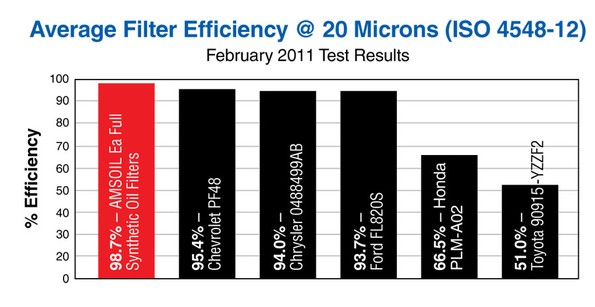
Full-flow Oil Filters install directly into the line of oil circulation. The oil passes through the filter as the oil journeys between the oil pump and the engine. A full-flow filter must be able to remove and hold contaminants without obstructing oil flow to the engine.
An important thing to mention is the efficiency rating of a full-flow oil filter. That efficiency rating is simply a measure of the percentage of ~20-micron dirt particles that the filter can capture over a certain duration.
Because they use a thin layer of porous filter paper, most filters on the market compromise the filtration of finer particles. Such filters have almost no extended cleaning ability since they have a low capacity for storing dirt.
These "surface-type" paper filters quickly become restricted as debris builds up on the paper surface, forcing the filter by-pass valve to open and allows unfiltered oil into the engine.
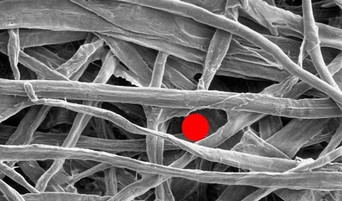
Cellulose fibers are inconsistent in size and shape.
This allows more contaminants to pass through, resulting in higher restriction and lower capacity.
(Note: The red circles represent the diameter of a 20 micron particle)
An Oil Filter’s capacity refers to the amount of contaminants it can hold and still remain effective. Proper oil flow is essential to keeping engine parts lubricated at all times.
AMSOIL Ea® Full-Flow Oil Filters feature advanced full-synthetic media that traps and holds a greater amount of small, wear-causing contaminants compared to conventional filters. They provide extended service intervals for increased convenience, while helping reduce engine wear.
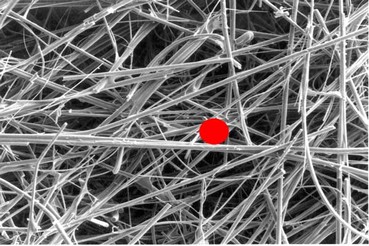
Small, consistent synthetic fibers trap smaller particles.
They also hold more contaminants, resulting in lower restriction.
Proper oil flow is essential to keeping engine parts lubricated at all times. Ea Oil Filters' synthetic fibers are smaller than the fibers used in traditional filters, allowing them to provide lower restriction.
During cold-temperature warm-up periods, an Ea Oil Filter allows the oil to flow through the filter more easily than a typical cellulose filter does. Lower restriction decreases engine wear.
AMSOIL Ea Full-Flow Filters are made with premium-grade full-synthetic media. The strictly controlled processing of this media ensures accurate filter construction and is what allows Ea Oil Filters to deliver higher capacity and efficiency along with better durability.
Ea Oil Filters' full-synthetic media technology is resin-free to resist degradation from hot oil. It uses a wire screen backing that is pleated with the media for superior strength.
They are constructed with HNBR gaskets that are fully tested to extreme distances in numerous severe environments and feature fully tucked seams, a molded element seal, roll-formed threads and a long-lasting, premium-grade silicone anti-drainback valve.
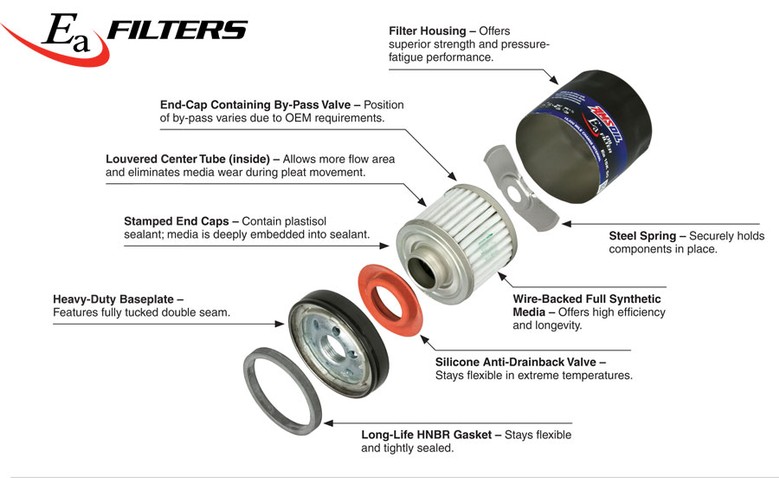
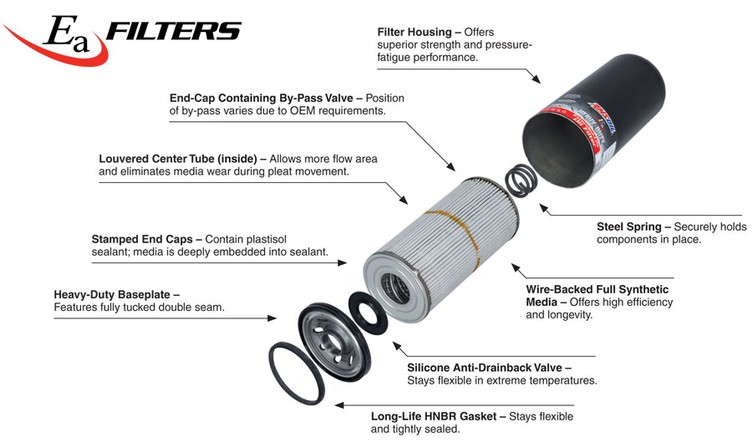
How a Spin-On Full-Flow Oil Filter Works
There are actually two types of full-flow oil filters: the Canister/Spin-On type and the Cartridge type.
Your engine’s Oil Pump pushes oil into the Filter - which is sealed to your engine’s oil filter housing - through a number of radial holes in the filter’s metal 'base plate'. The pressure generated by that pump is enough to push an "Anti-drainback Valve" - which sits just on the other side of the base plate - out of the way, at which point oil can enter the Filter.
Once in the Oil Filter, the oil surrounds a cartridge, which consists of a center tube (usually-metal) surrounded by cellulose-based or synthetic pleated fibers, sealed off by metal, plastic or fiber end-caps.
Once oil has passed through the base plate holes, through the anti-drainback valve, and has surrounded the filter element, it passes through the pleated medium, through the holes in the center tube, and back up through the exit at the top of the filter.
Two very important parts of an oil filter are the "Anti-drainback Valve" and the "By-pass Valve".
The Anti-drainback Valve makes sure the filter traps oil when the engine isn’t running. It’s essentially a nitrile or silicone one-way check-valve that prevents oil in a filter - particularly one that’s mounted sideways or upside-down - from flowing back into the sump. This means, when you come to start your engine back up, you’ll get instant oil pressure to lubricate your parts (i.e. you won’t risk a “dry start”).
To prevent a plugged oil filter from starving the engine of lubrication, oil filters have a built-in safety device called a By-pass Valve. The By-pass Valve's job it is to allow the oil to by-pass the filter cartridge, flowing unencumbered by the filtration material, to provide adequate engine lubrication under all conditions.
When the differential pressure across the oil filter element exceeds a predetermined value - like those that might occur if the filter element has reached its capacity (like if it’s been left on a car for too long, and has clogged with dirt) or if the oil’s viscosity is too high (especially in cold conditions) - the By-pass Relief Valve opens so oil can continue to flow to the engine.
However, when the By-pass Relief Valve is open, no filtration occurs.
Also inside an Oil Filter are leaf or coil springs. Those springs simply act to push the cartridge up against the anti-drainback valve.
Another very important feature of a Filter is the "gasket". It has to seal the oil in the system for thousands of miles, in an atmosphere of heat and vibration. Gasket quality is very important, and low-priced filter manufacturers tend to use 'cheap' low-quality gaskets that get hard and brittle after just a few thousand miles. Leaks - and worse - can result.
By-Pass Oil Filtration
By-pass Oil Filtration features a secondary filter with the purpose of eliminating nearly all contaminants from motor oil.
By-pass filters have high capacities and eliminate much smaller particles than full-flow filters, including soot. They reduce engine wear and increase oil volume, but their high efficiencies mean they also have higher restriction and must be used in conjunction with a full-flow filter.
AMSOIL Ea By-pass Oil Filters operate by filtering oil on a "partial-flow" basis. They draw approximately 10 percent of the oil pump's capacity at any one time and trap the extremely small, wear-causing contaminants that full-flow filters can't remove.
By-pass filters have a high pressure differential, causing the oil to flow through them very slowly and allowing for the removal of smaller contaminants. It is called by-pass filtration because the oil flows from the by-pass filter back to the sump and by-passes the engine.
This continual process eventually makes all of the oil analytically clean, reduces long-term wear and can dramatically extend drain intervals.
Because oil must be filtered quickly while removing most of the particles in the oil, the average full flow filter can only trap particles as small as 20 microns. With an efficiency rating of 98.7 percent at 2 microns, AMSOIL Ea By-pass Oil Filter provides the best possible filtration protection against wear and oil degradation.
The superior construction of AMSOIL Ea By-pass Oil Filters provides better sealing and increased longevity along with superior corrosion resistance. EaBP Filters have a marine powder coated exterior and their zinc-dichromate base plates increase rust protection. They also have a nitrile HNBR gasket and an orange silicone anti-drain valve.
AMSOIL’s high-efficiency by-pass filter element is also a soot removal device.
These filters remove 39 percent of soot contaminants less than one micron. Soot removal efficiency increases approximately 10 to 14 percent when the EaBP Filter is used in conjunction with a standard full-flow filter.
Ea By-Pass Filters use a synthetic/cellulose sandwiched media. The inner layer of the element is composed of a highly efficient cellulose media covered with a full synthetic media outer layer.
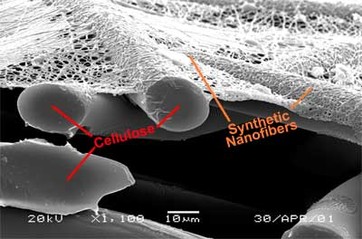
AMSOIL Ea By-Pass Oil Filter typically filters all the oil in the system several times an hour. At normal operating RPMs it will filter all of the oil in a typical five quart sump in less than 10 minutes. The continual filtering process eventually makes all the oil analytically clean, reducing long-term wear.
The increased fluid system capacity and filtration life provides improved oil cooling and ensures that equipment constantly runs on clean oil. Engine efficiency is increased, providing extended engine life.
By cleaning the oil so completely, the EaBP Filter not only prolongs engine life but also the life of the oil itself. With the AMSOIL Ea By-Pass Filter, oil changes can be extended well beyond normal, in many cases virtually indefinitely, depending upon the conditions and severity of use.
By-Pass Filtration Benefits
- Dramatically Extended Drain Intervals
- Improved Oil Cooling
- Increased Filtration Capacity and Life
- Increased Fluid System Capacity
- Efficient Small Particle and Soot Removal
- Significantly Extended Engine Life
- Equipment Constantly Runs on Clean Oil
- Increased Engine Efficiency
- Remove Particles Less Than One Micron
Dual-Guard By-Pass Oil Filtration
The AMSOIL Dual-Guard By-Pass Oil Filter links two AMSOIL Ea By-Pass Filter Elements together for engines with sump capacities greater than 20 quarts.
Dual Remote: Patented Protection
Available only from AMSOIL, the Dual Remote Oil Bypass Filtration System replaces conventional full flow filters, mounting in any convenient location in the engine, and gives full flow and by-pass oil filter protection.
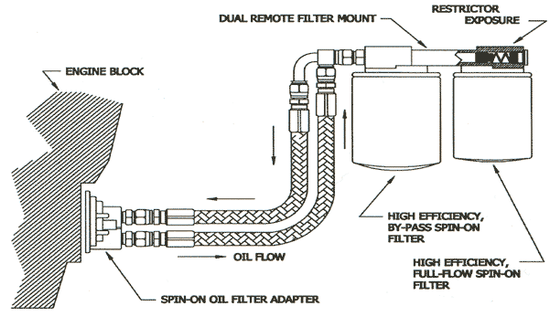
With the AMSOIL Dual Remote Oil Bypass Filtration System, filter changes are quick, clean and easy. It also increases an engine's oil capacity, helping oil work better, not harder.


Home Page | Products | About AMSOIL | Oil Basics | Buy Wholesale | FAQs | Contact Us | General Site Map

